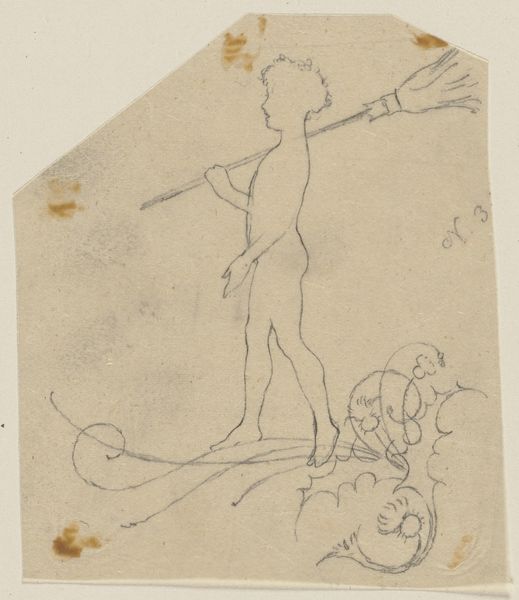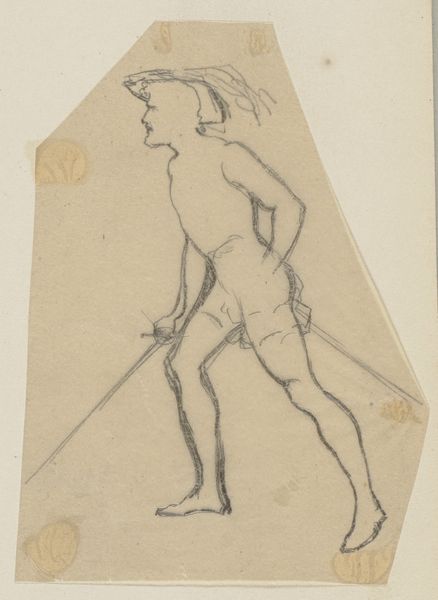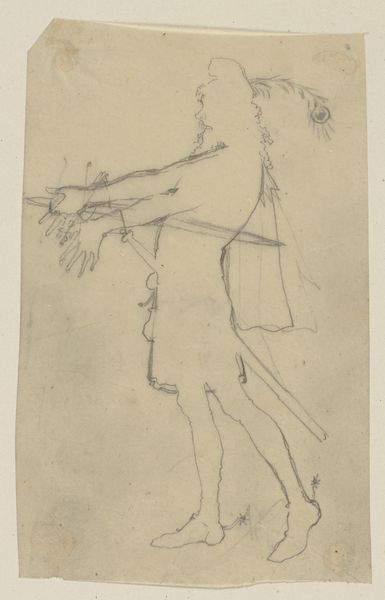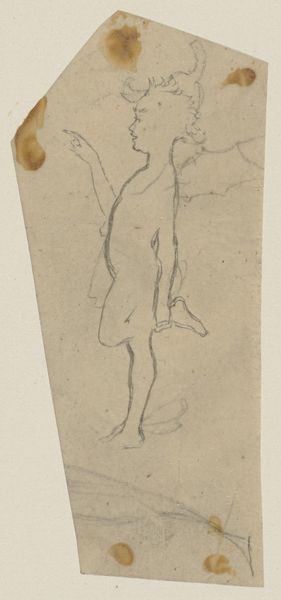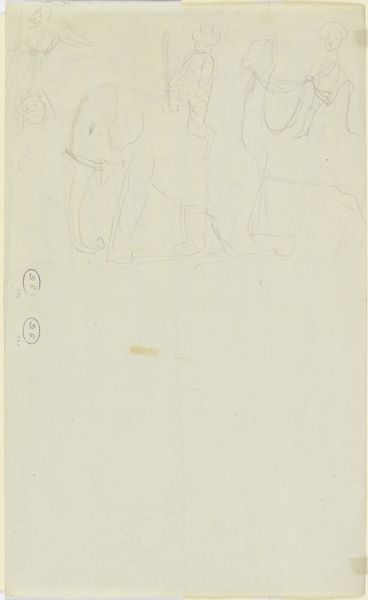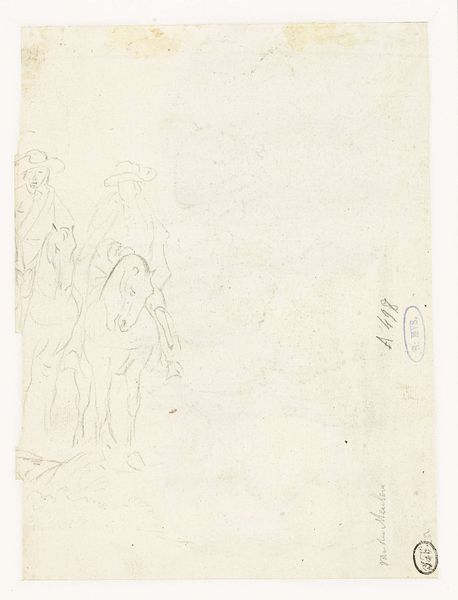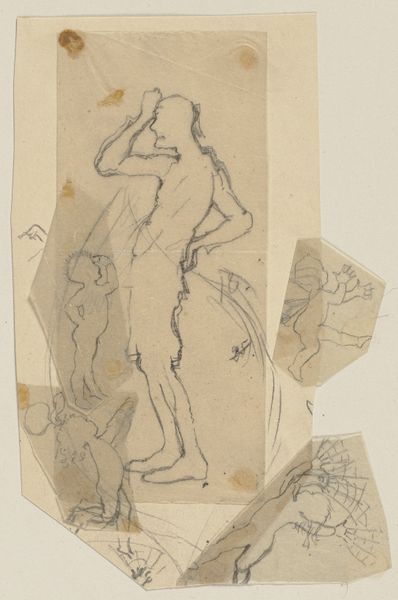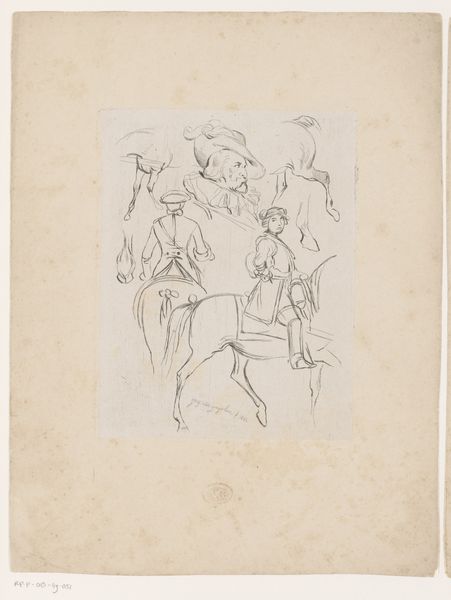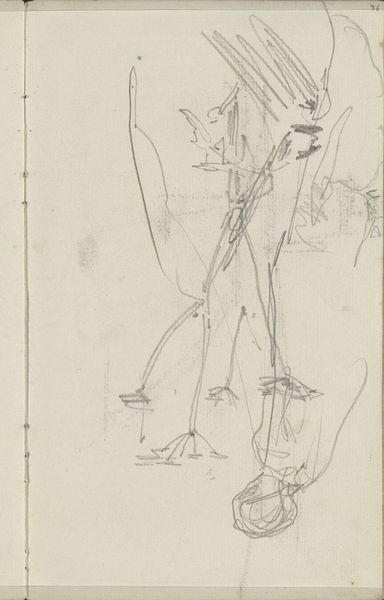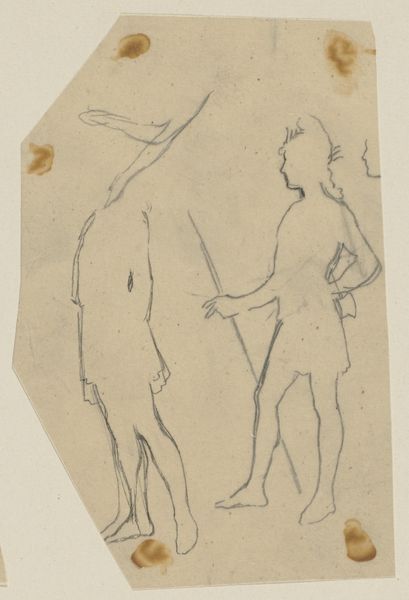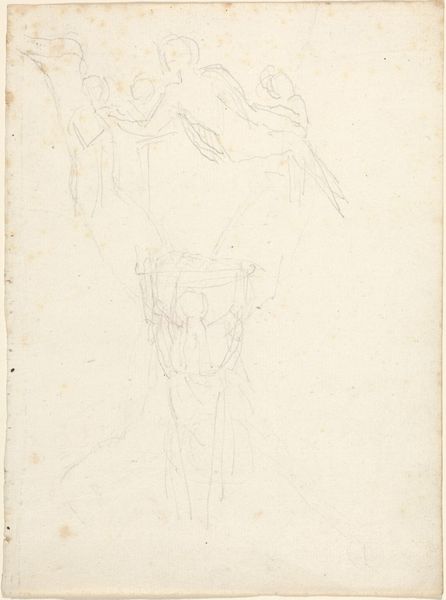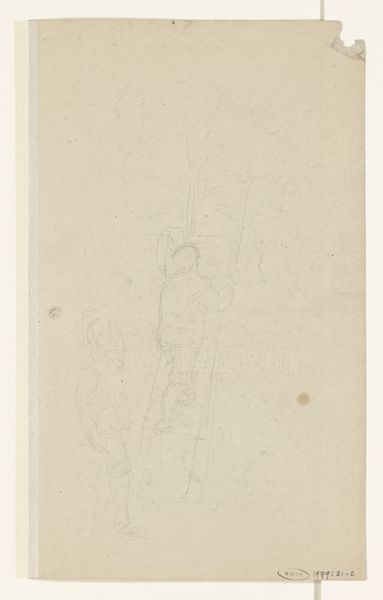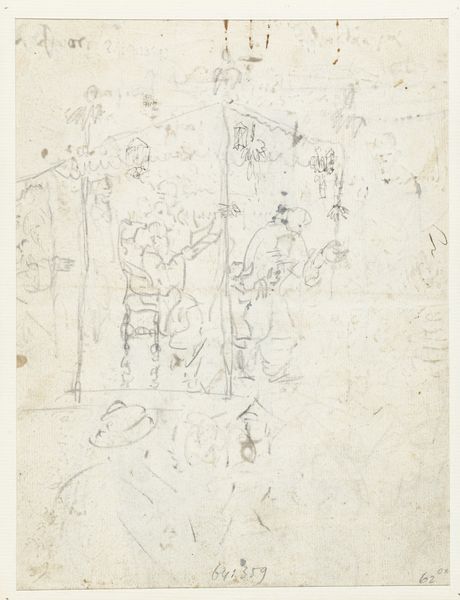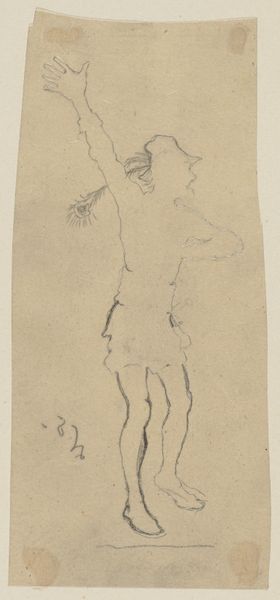
Oberon mit Lanze und Jagdhorn, stehend, nach links, begleitet von zwei Elfenkindern c. 1867 - 1868
0:00
0:00
Copyright: Public Domain
Editor: Here we have Paul Konewka's pencil drawing, "Oberon with Lance and Hunting Horn, Standing, to the Left, Accompanied by Two Elf Children," circa 1867-68. It's currently housed at the Städel Museum. The figures are simply drawn with elegant lines, giving the work a light and airy quality. What do you see in this piece? Curator: Immediately striking is the artist’s strategic deployment of line. The starkness of the lines isolates the forms and invites scrutiny of the individual elements—the angle of the lance, the curvature of the hunting horn, the implied textures of the figures' garments. Note how the negative space becomes as assertive as the drawn elements, challenging a traditional figure-ground relationship. Does this emphasis alter your perception of the narrative being conveyed? Editor: It does! It's like the relationships between the figures matter as much as the figures themselves. Is that negative space a commentary of some kind? Curator: The "commentary" is perhaps not intentional, or thematic, but relational. This formalist analysis shifts away from narrative intention towards considering structural interplay: How the line creates volume without mass, how light is represented purely through its absence, and how these contribute to the overall aesthetic experience of Romanticism. Editor: It’s interesting to think about how much the visual structure informs our reading of the image, separate from the mythological aspects. I suppose you can discover a lot from close looking! Curator: Indeed. The drawing compels a reconsideration of fundamental artistic components: line, space, and form, challenging preconceived notions.
Comments
No comments
Be the first to comment and join the conversation on the ultimate creative platform.
